Easy Dakgalbi(닭갈비) Recipe, Korean spicy stir-fry chicken with boneless chicken thighs
"Learn how to make authentic Korean spicy dakgalbi using chicken legs."
(5) default ratingBy Food and Spot, August 1, 2025
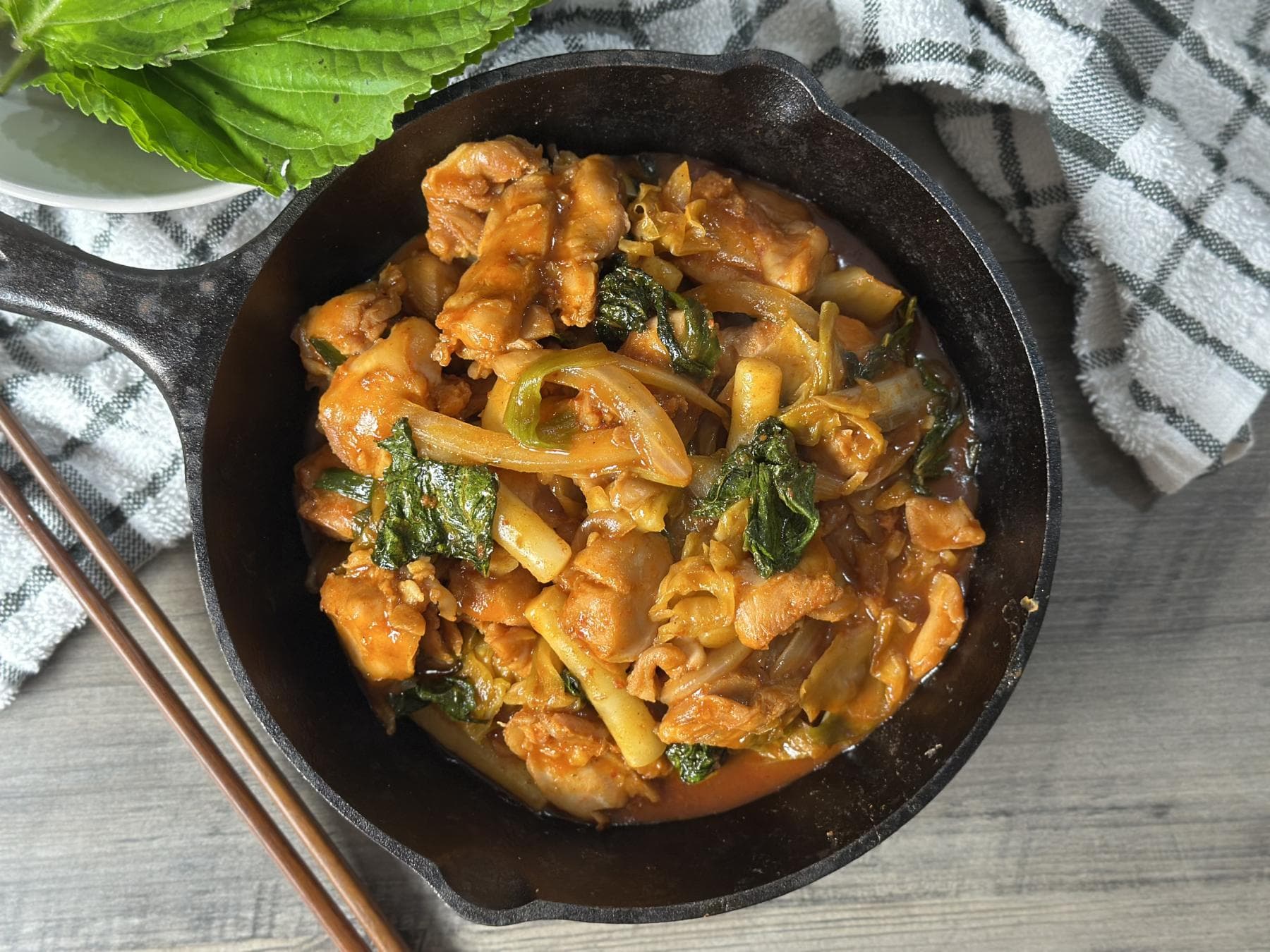
ingredients
- 2 tbsp soy sauce
- 1/2 tbsp oyster sauce
- 3 tbsp gochujang (Korean red pepper paste)
- 2 tbsp cooking wine
- 2 tbsp sugar
- 2 tbsp gochugaru (Korean red chili flakes)
- 1 tbsp minced garlic
- 1/2 tbsp black pepper
- Boneless chicken thighs
- 1 cup milk
- 1/2 onion
- 1 stalk green onion
- 2–3 cups cabbage
- 4–5 perilla leaves
- Korean rice cakes
Easy Dakgalbi Recipe with boneless chicken thighs
Cooking time : 40 mins Serves : 2 people
Dakgalbi is one of Korea’s most beloved spicy chicken dishes. It’s hearty, flavorful, and perfect for sharing.
Whether you’re already a fan of Korean food or exploring it for the first time, this easy dakgalbi recipe will guide you through each step of the process. From the flavorful marinade to the soft, chewy rice cakes added at the end, and even a cultural tip on k-dessert. You’ll learn how to recreate this comforting, spicy dish at home.

What Is Korean Dakgalbi (닭갈비)?
Dakgalbi (닭갈비) literally means “chicken ribs,” though it doesn’t include actual ribs. It’s a spicy stir-fried chicken dish that originated in Chuncheon, a city in South Korea. The dish is known for its bold, spicy-sweet flavor and the combination of tender chicken, cabbage, onions, rice cakes, and aromatic Korean seasonings.
It’s usually cooked at the table on a large, flat grill, but it can also be easily prepared in a large pan at home.
Why Use Boneless Chicken Thighs for Dakgalbi?
- Juicier meat
- Richer taste due to the higher fat content
- More economical option for large portions
- A satisfying texture after marination
Using chicken legs also adds a slightly different dimension to the traditional recipe, giving it a homey, rustic edge.
Dakgalbi Ingredients: What You Need to Make Spicy Korean Stir-Fried Chicken
Here’s everything you’ll need to make this easy chicken leg dakgalbi at home:
For the Chicken:
- Boneless chicken thighs (cut into bite-sized pieces)
- 1 cup milk (for marinating)
For the Marinade:
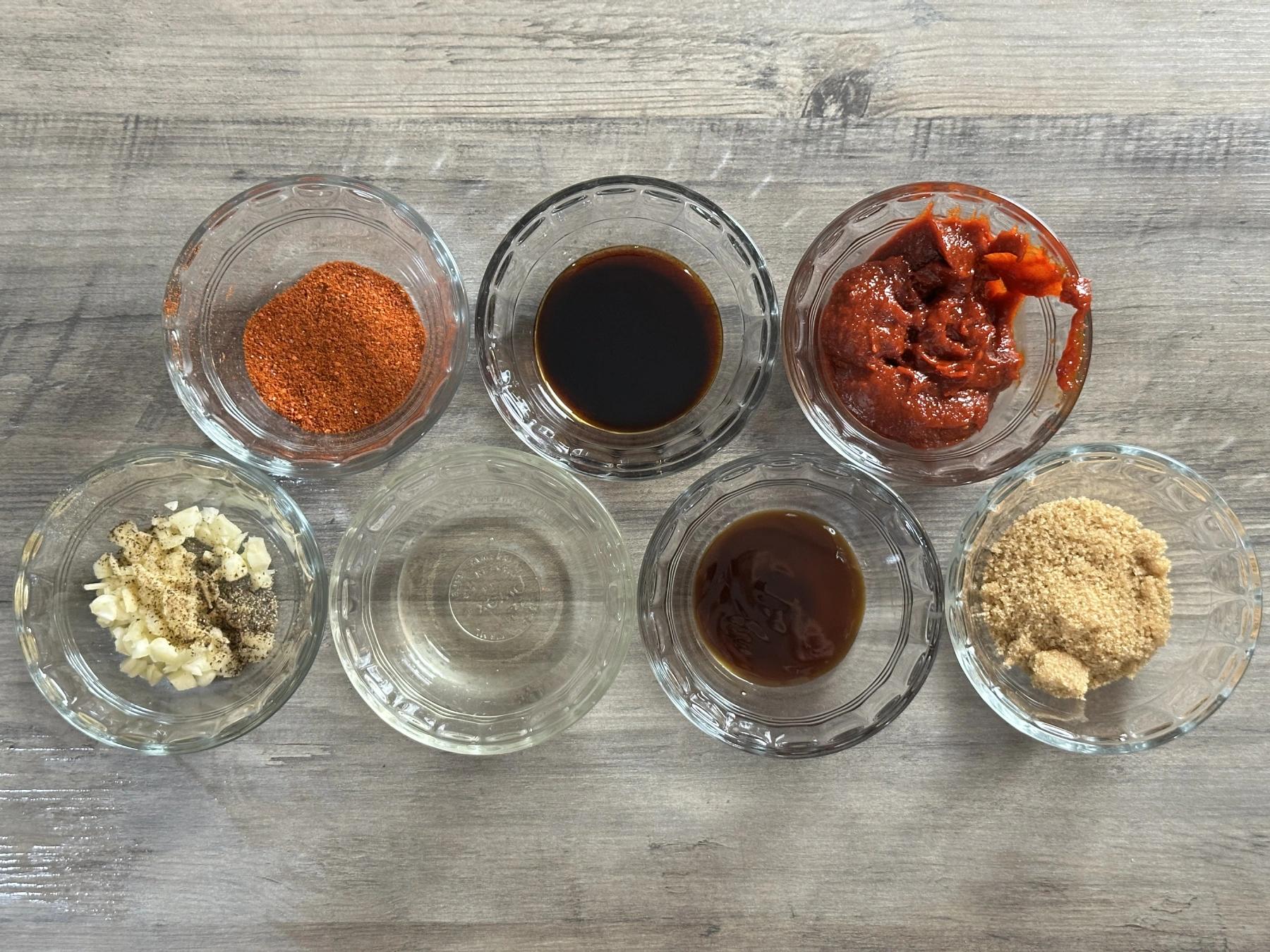
- 2 tbsp soy sauce
- 1/2 tbsp oyster sauce
- 3 tbsp gochujang (Korean red pepper paste)
- 2 tbsp cooking wine
- 2 tbsp sugar
- 2 tbsp gochugaru (Korean red chili flakes)
- 1 tbsp minced garlic
- 1/2 tbsp black pepper
For the Vegetables and Add-ins:
- 1/2 onion (sliced)
- 1 stalk green onion (cut into 2 cm pieces)
- 2–3 cups cabbage (cut into bite-sized pieces)
- 4–5 perilla leaves (cut into 3–4 sections)
- Korean rice cakes (tteokbokki-style, soaked in water beforehand)
- Neutral cooking oil (for stir-frying)
How to Make Dakgalbi at Home (Step-by-Step)
Follow these simple steps to make restaurant-quality dakgalbi right in your kitchen.
Step 1: Marinate Chicken Thighs in Milk for Tenderness
Start by cutting the chicken legs into bite-sized pieces. Place them in a bowl and cover with milk. Let the chicken soak for 10 minutes. This helps:
- Tenderize the meat
- Remove any unwanted odor
- Improve texture
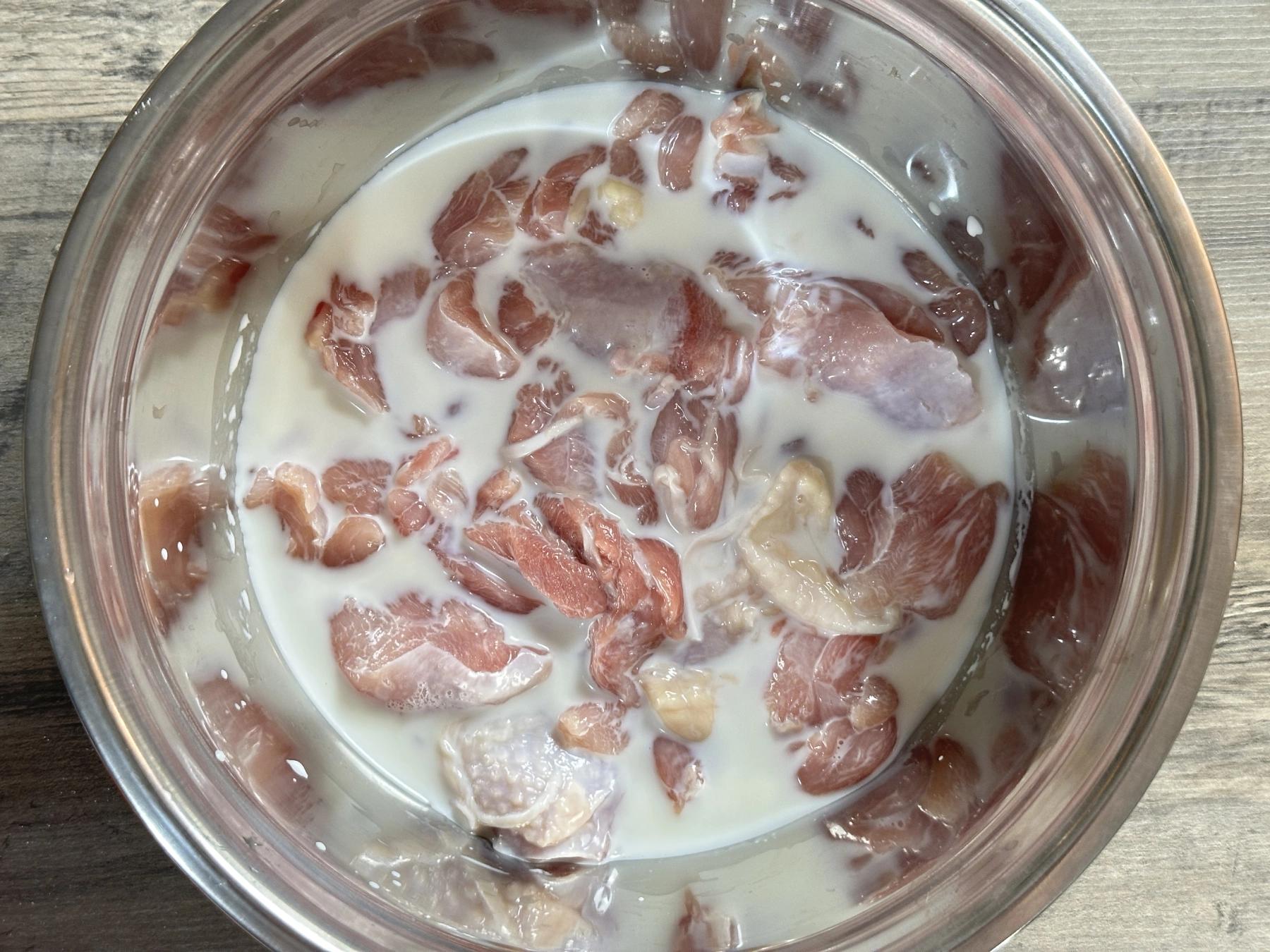
After 10 minutes, drain the milk completely.
Step 2: Make and Add Spicy Dakgalbi Marinade
In a separate bowl, combine all the marinade ingredients:
- 2 tbsp soy sauce
- 1/2 tbsp oyster sauce
- 3 tbsp gochujang
- 2 tbsp cooking wine
- 2 tbsp sugar
- 2 tbsp red pepper flakes
- 1 tbsp garlic
- 1/2 tbsp black pepper
Mix well until the paste is smooth and even.
Pour the marinade over the drained chicken pieces. Use your hands (or gloves) to coat every piece thoroughly. Let it marinate while you prepare the vegetables.
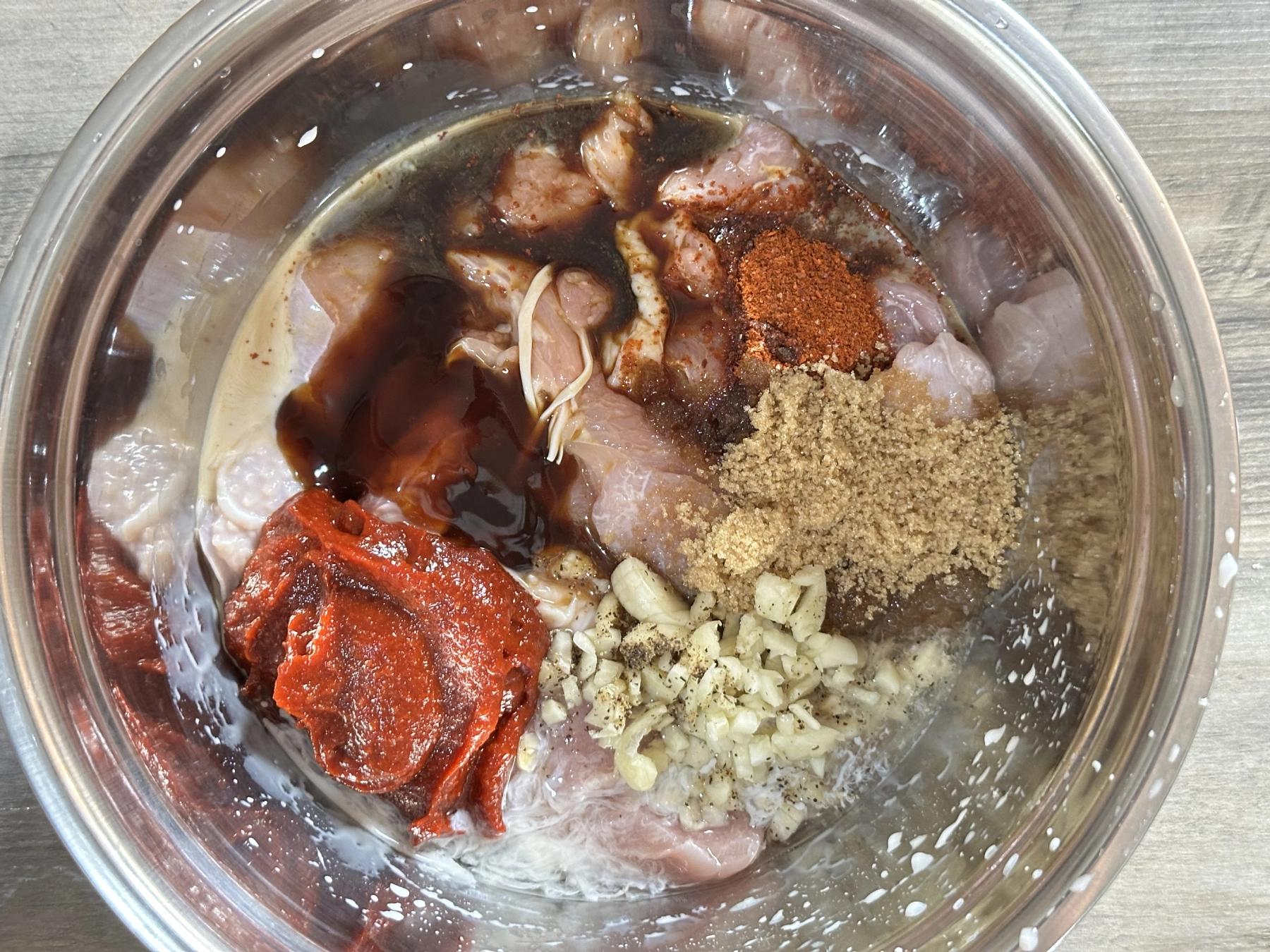

Step 3: Prep Vegetables and Soak Tteokbokki Rice Cakes
- Onion: Slice thinly.
- Green Onion: Cut into 2 cm sections.
- Cabbage: Roughly chop into bite-sized pieces.
- Perilla Leaves: Cut into 3–4 pieces per leaf.
- Rice Cakes: Soak in cold water for at least 10 minutes to soften them before cooking.
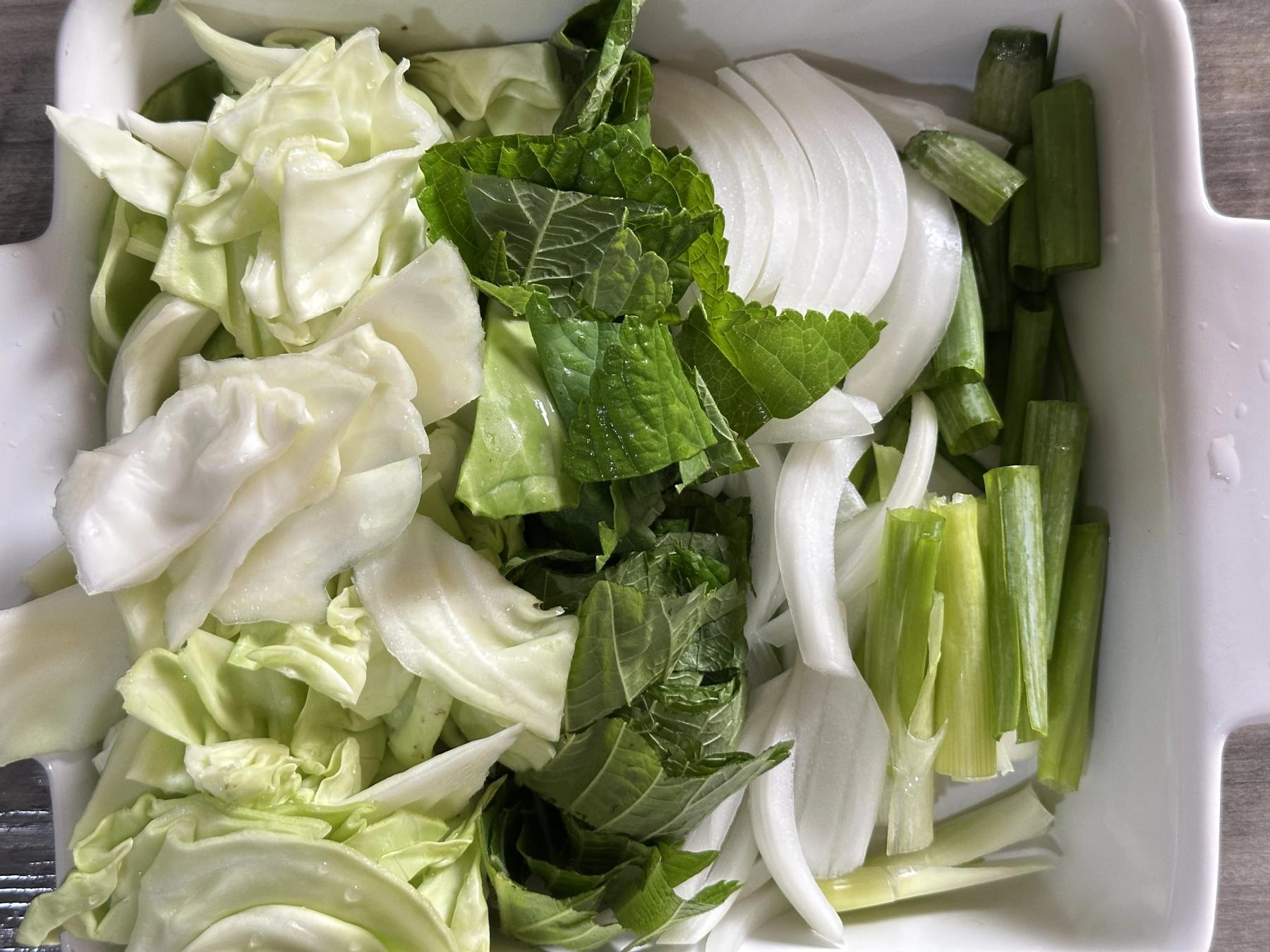
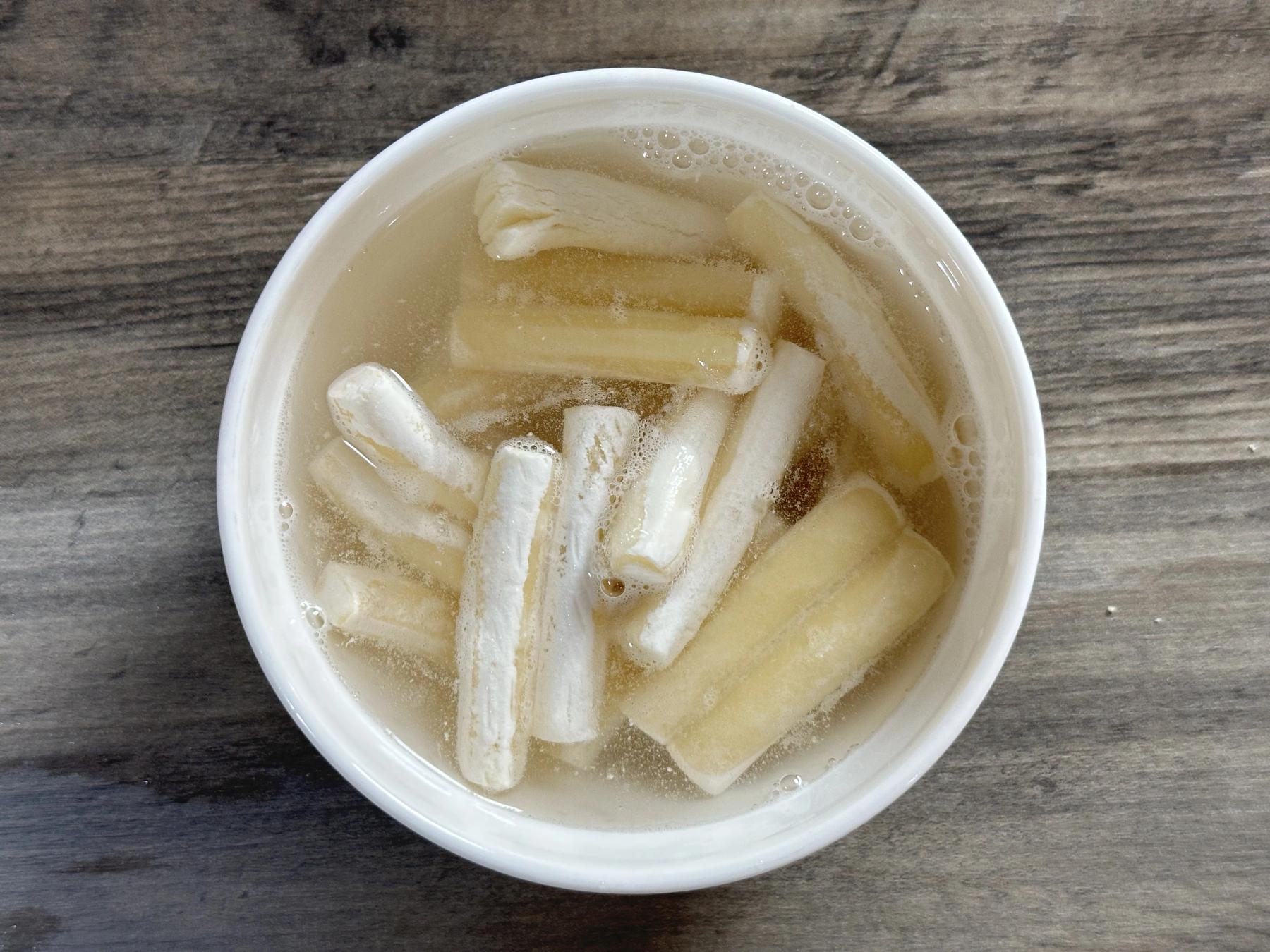
Step 4: Stir-Fry Cabbage to Build the Base
Heat a large pan or wok over medium heat and add a small amount of oil. Once the oil is hot, add the cabbage and stir-fry it for 3-4 minutes until slightly wilted.
This step softens the cabbage and creates a bed for the chicken to cook on without burning.
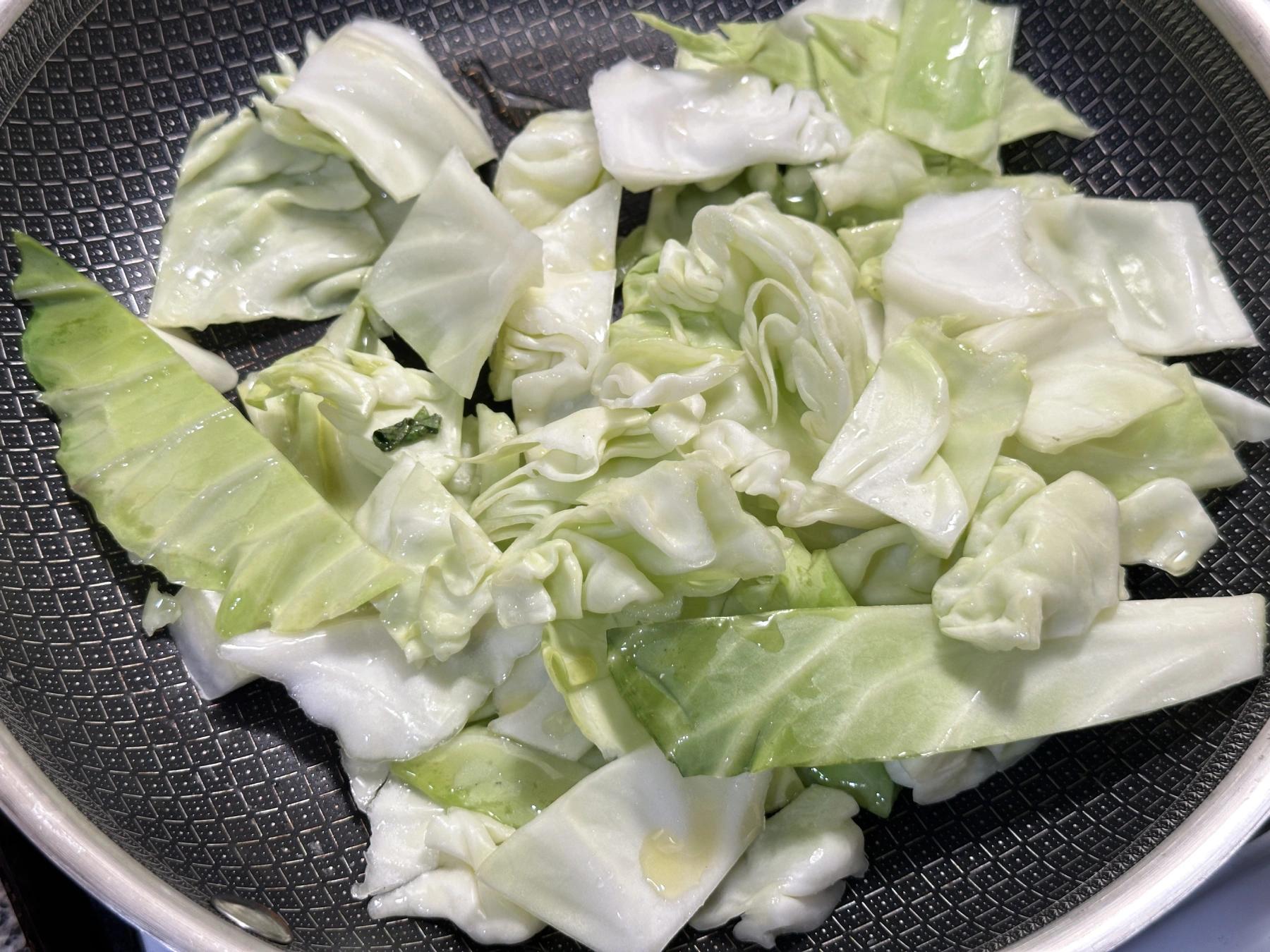
Step 5: Cook Marinated Chicken Until Caramelized
Lower the heat to medium-low and add the marinated chicken on top of the cabbage. Let it cook for about 10 minutes on each side, flipping occasionally to prevent burning.
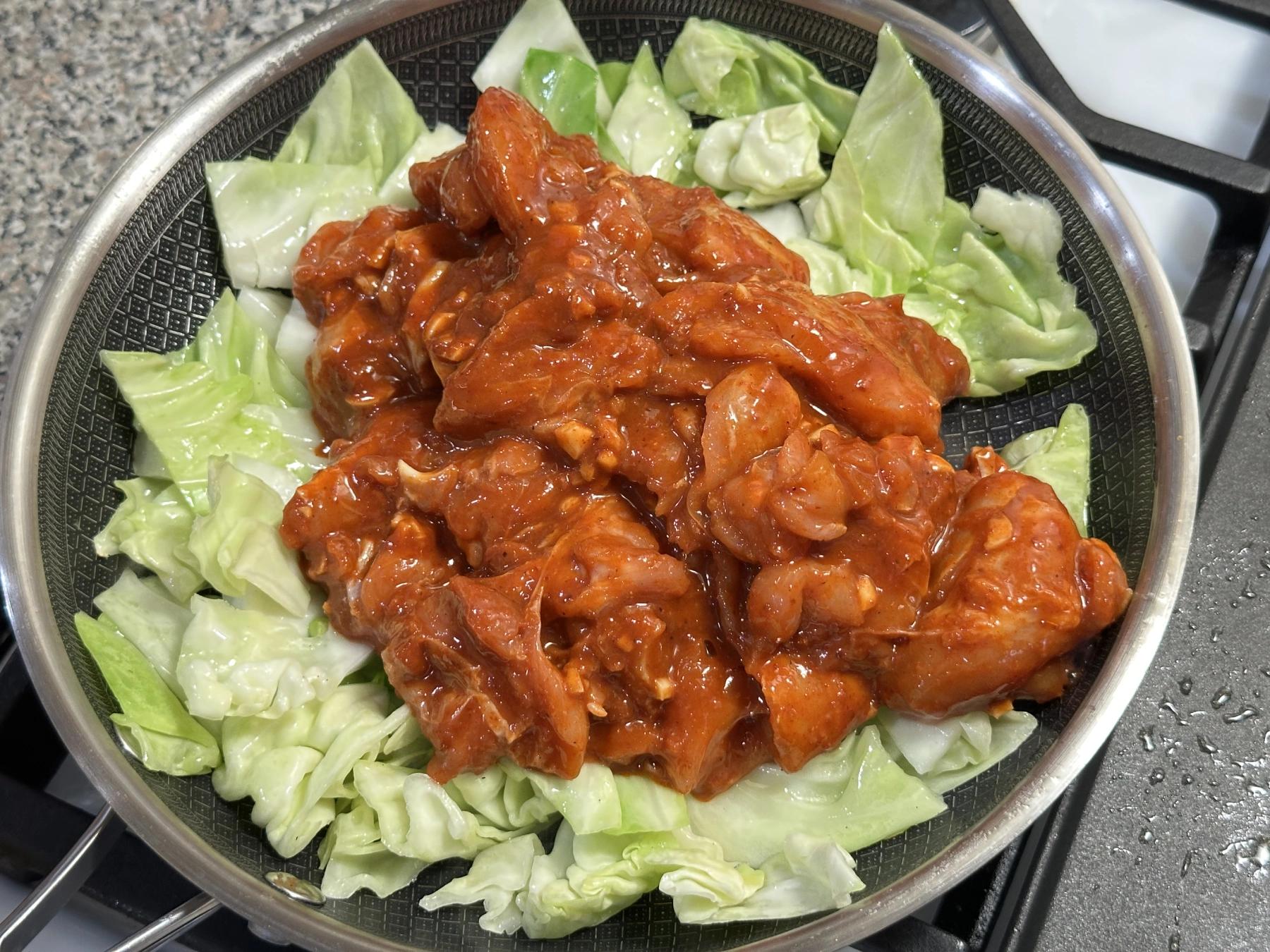
You want the chicken to:
- Cook thoroughly
- Absorb all the flavors
- Become lightly charred and caramelized
Step 6: Combine All Ingredients and Simmer
Once the chicken is fully cooked, add:
- Onion slices
- Green onion pieces
- Perilla leaves
- Soaked rice cakes
Stir everything together and continue cooking until the rice cakes become soft and chewy, this usually takes another 3–5 minutes.
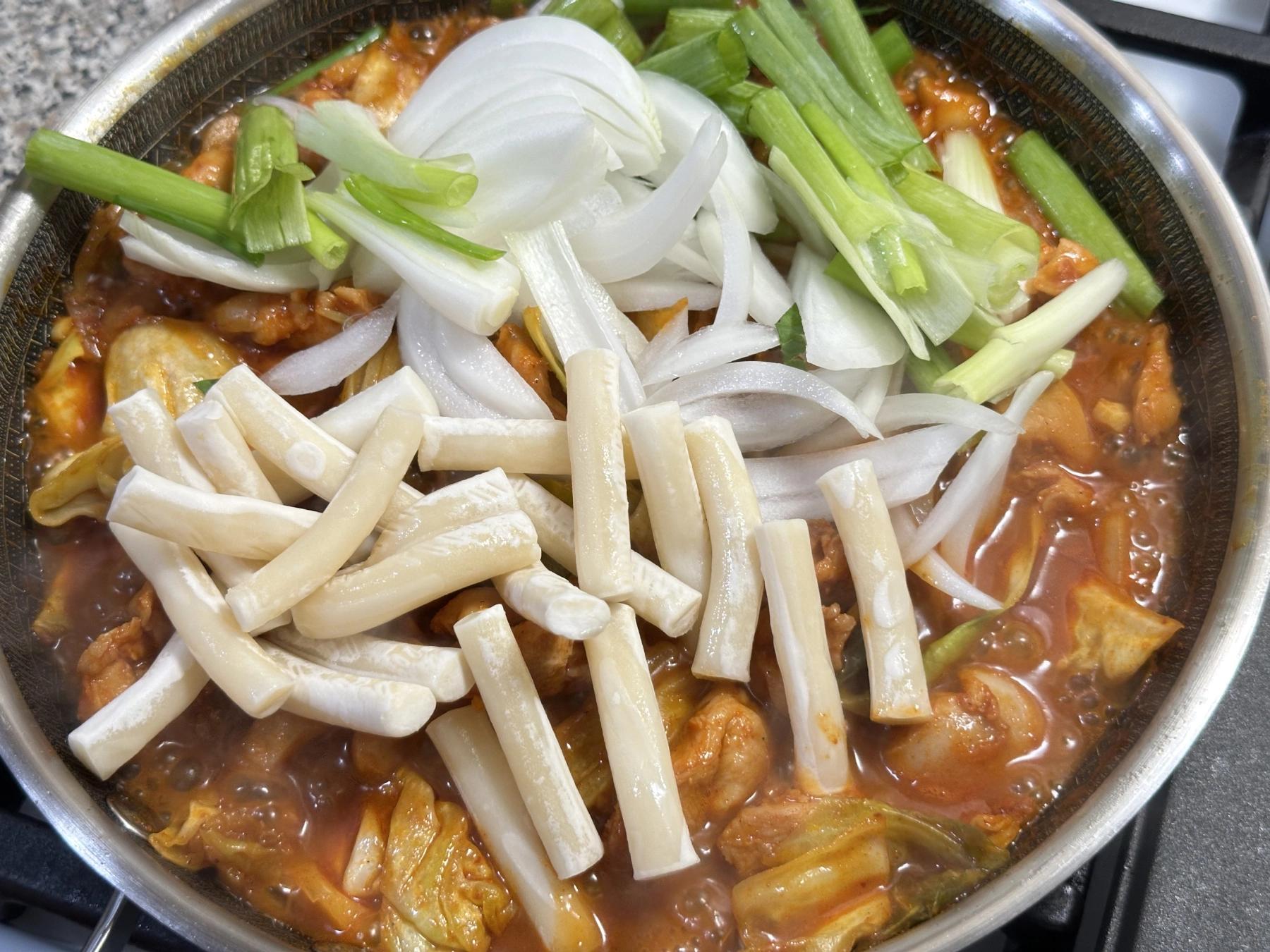

At this point, everything should be coated in the spicy sauce, and the aromas will be irresistible.
Best Toppings and Add-Ons for Dakgalbi
Want to take your dakgalbi to the next level? Try these additions:
- Mozzarella cheese: Sprinkle on top and let it melt into the dish.
- Sweet potato: Adds a natural sweetness and a different texture.
- Glass noodles (dangmyeon): Soak them and add during the last few minutes of cooking.
- Fried rice at the end: Once you’ve eaten the chicken and vegetables, stir-fry leftover sauce with rice and seaweed.
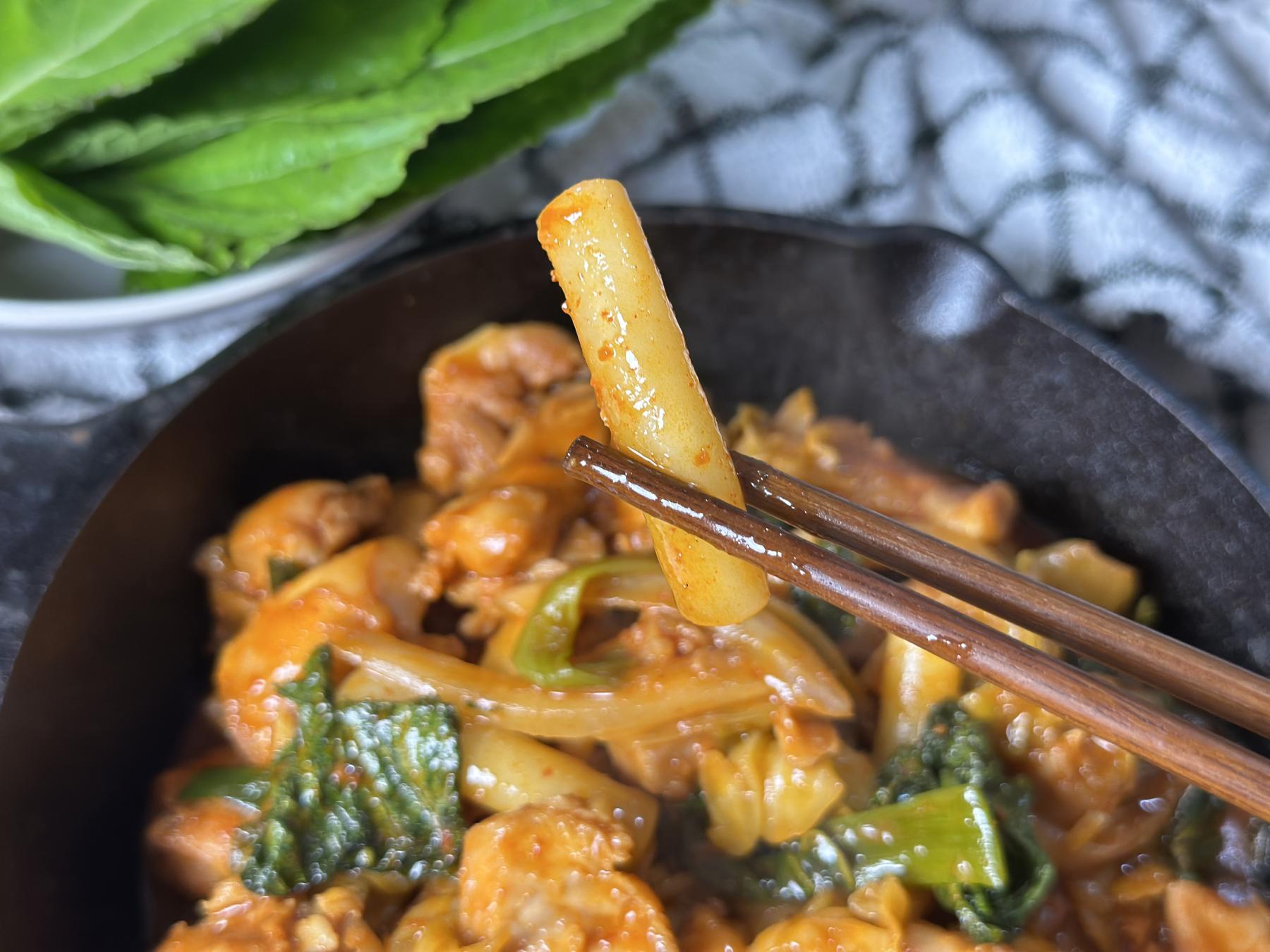
Why Koreans Eat Fried Rice After Dakgalbi
In Korea, after enjoying a spicy meal like dakgalbi, many people reach for a Fried rice as a way to cool the palate and signal the end of the meal.
This isn’t just a random dessert, it’s a cultural habit and a comforting finish to a hearty, flavorful dish.
Cooking Tips and How to Store Leftover Dakgalbi
- Use fresh boneless chicken thighs if possible. They hold flavor better than frozen.
- Marinate longer (30 minutes to 1 hour) for deeper flavor.
- Soak rice cakes well to avoid uneven texture.
- Use nonstick or cast iron pan to prevent sticking and ensure even caramelization.
- Leftovers: Dakgalbi tastes even better the next day. Store in an airtight container in the fridge for up to 3 days. Reheat in a pan with a splash of water or extra gochujang.

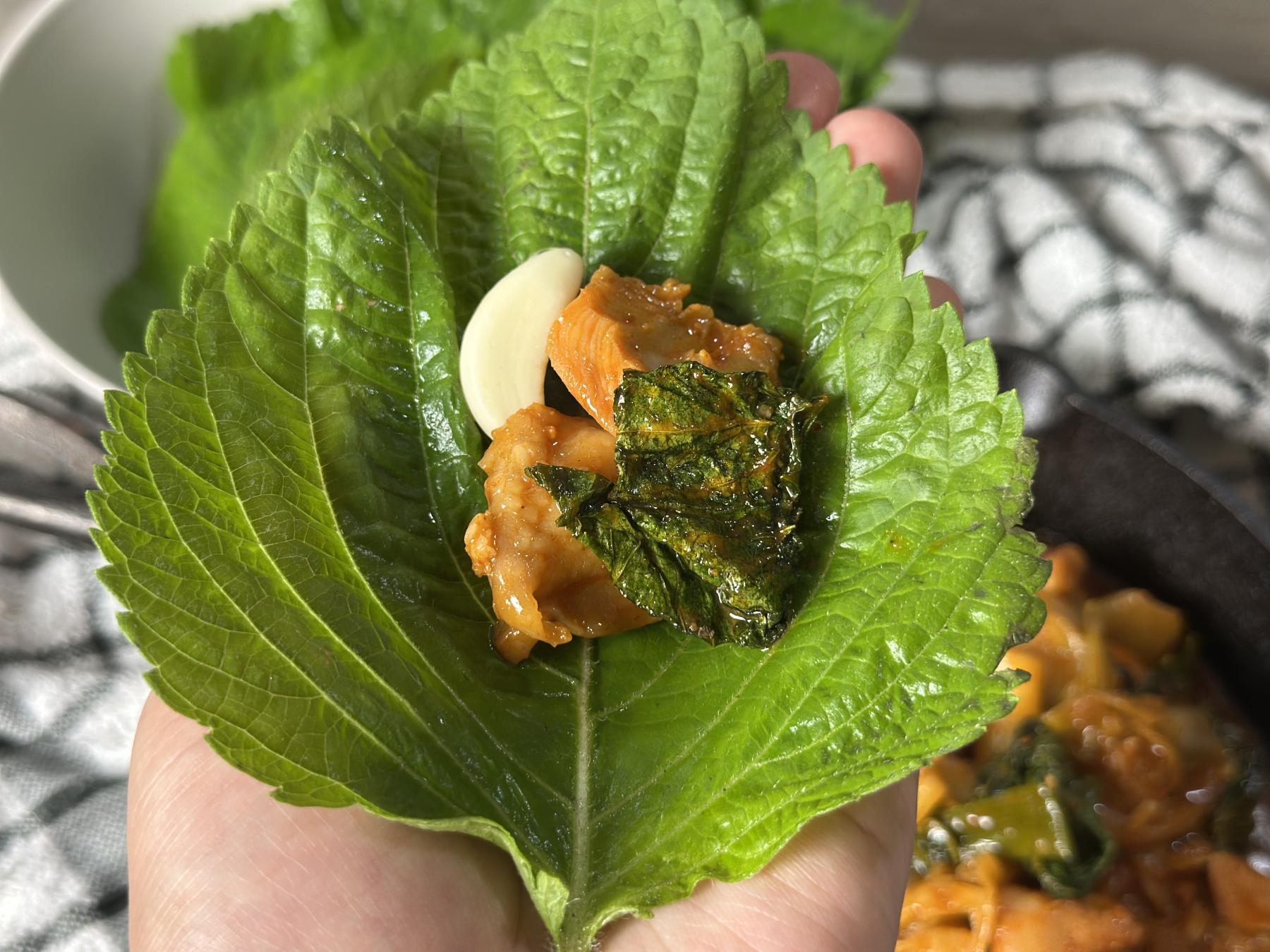
Final Thoughts: Make Spicy Dakgalbi with Chicken Thighs for Easy Weeknight Dinners
If you’ve been craving Korean food but want something hearty, spicy, and easy, this chicken leg dakgalbi recipe is a must-try.
It brings the depth and warmth of traditional Korean flavors into your home kitchen without needing specialty equipment or hard-to-find ingredients.
And with the bonus of finishing your meal with a fried rice K-dessertt, you’re not just cooking, you’re embracing the comforting ritual of a full Korean dining experience.
So grab your pan, gather your ingredients, and cook up a dish that’s guaranteed to warm both your belly and your soul.
Leave a comment
Comments
No comments yet.